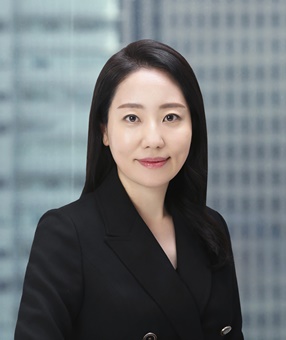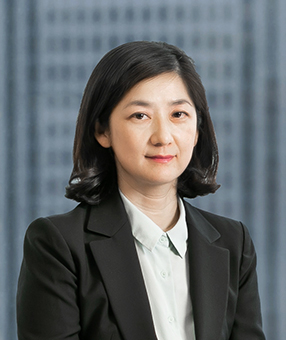Over the past several years, local Korean generic companies have raised numerous challenges against pharmaceutical patents arguing that patent scope during the PTE (patent term extension) period is strictly limited to the specific form and specific use of the original approved product. This argument has been based on Article 95 of the Korean Patent Act, which states that "the effects of a patent whose term has been extended only reach acts of working the patented invention concerning the product whose approval was the basis for the term extension (and where the approval was obtained for a specific use, for that specific use only)." This provision has since been interpreted and clarified through a number of Korean court decisions. The following provides an overview of the legal landscape that has emerged from these rulings.
PTE scope regarding approved compound forms
On January 17, 2019, the Supreme Court issued an important ruling in the Vesicare® case1 that patent scope during PTE was not strictly limited to the specific form of the product in the approval. In that case, the patent claimed the compound solifenacin, but the drug approval on which the PTE was based actually involved the solifenacin succinate form of the compound. Generic companies tried to argue that their products used a different salt form, solifenacin fumarate, and therefore were outside the scope of PTE. However, the Supreme Court held that the specific salt form of the approved compound was not determinative, but that patent scope during PTE must be determined by reviewing the active ingredient, therapeutic effect, and use of the approved product underlying the PTE compared to the generic product. The Vesicare® case was a significant win for patentees, and its reasoning has been applied in various subsequent PTE cases.
Because the Vesicare® case made it difficult for generics to argue that their products were outside PTE scope simply by using different salt forms, some generic companies sought to distinguish their products using other forms of the original approved compound that were not discussed in the Vesicare® case. For example, generic companies filed scope confirmation actions arguing that their products were outside the scope of the PTE for the Pradaxa® compound patent because they used a free base form of dabigatran etexilate, rather than the specific salt form of the approved Pradaxa® product (dabigatran etexilate methanesulfonate), or any other salt form. However, the IP High Court rejected this argument and followed the reasoning of the Vesicare® case to hold that generics using free base forms rather than salt forms were still within the PTE scope.
In another set of cases involving the compound dapagliflozin, the Supreme Court confirmed that the scope of a patent on the dapagliflozin compound covered generic prodrugs using an ester form of the patented compound ("dapagliflozin formate"), while the Seoul Central District Court then ruled that the generic prodrug was within the scope of the compound patent even during PTE. The Seoul Central District Court held that the active ingredient expected to have a therapeutic effect was dapagliflozin itself, not "dapagliflozin formate," given that "active ingredient" generally refers to an "ingredient that is absorbed into the human body and expected to have a treatment effect for a particular disease through its pharmacological action"; the prodrug dapagliflozin formate was converted into dapagliflozin in the human body and showed the same pharmacological effect as the original product; and the prodrug product was approved on the basis of bioequivalence test results confirming that it resulted in equivalent blood concentrations to the original product.
In another recent case following the Vesicare® case, on October 23, 2024, the IP High Court ruled that a generic product using a solvate form of the active ingredient (edoxaban) of the oral anticoagulant Lixiana tablet® was within the scope of a compound patent covering edoxaban, whose term had been extended based on the approval of "edoxaban tosylate hydrate," even if the patent did not expressly claim the solvate form. The IP High Court stated that the accused generic product was the same as the patented invention in terms of the active ingredient and the therapeutic effect, and the conversion into a solvate form was technically easy, while the fact that "solvates" were deleted from the claims during prosecution was intended to overcome descriptive support and clarity rejections and did not indicate an intention to substantively exclude solvates from the patent scope.
PTE scope regarding approved uses
In view of the Vesicare® case which largely closed off Korean generic companies from using different compound forms to avoid PTE scope, generic companies have tried using a different strategy for early entry by arguing that because Article 95 of the Korean Patent Act limits the PTE scope to the "specific use" of the original approved product on which the PTE is based, this means PTE can only cover the specific indications in the original approval. Three Korean generic companies filed scope confirmation actions at the Korean Intellectual Property Trial and Appeal Board (IPTAB) making this argument, and emphasizing that indications that were subsequently added to the approval were no longer covered by the PTE. In these cases, the original product was initially approved for the treatment of disease A in combination with other agents, while treatment of disease A in monotherapy was added later. The generic products were intended for monotherapy treatment of disease A. However, the IPTAB held that the uses (and therapeutic effects) considered within the scope of a compound PTE are not limited to only the first approved indications, and confirmed that the generic's products were within the scope of the patent PTE. This IPTAB decision was not appealed and became final.
In another case, more than 200 scope confirmation actions were filed by generics against a compound patent covering K-CAB Tab. (tegoprazan), arguing that the scope of the PTE for the patent was limited to the specific indications that were initially approved ((i) erosive gastroesophageal reflux disease and (ii) non-erosive gastroesophageal reflux disease), and did not cover the additional indications (iii) gastric ulcers, (iv) antibiotic combination therapy for eradication of helicobacter pylori in patients with peptic ulcers and/or chronic atrophic gastritis, and (v) maintenance therapy after treatment of erosive gastroesophageal reflux disease. The IPTAB ruled in the patentee's favor that "use" referred to the therapeutic effect of the approved product, not merely the "indications" of the product, and therefore the scope of the compound PTE still covered generic products used for subsequently approved indications as well as the original indications. Most of the affected generic companies appealed to the IP High Court, and in one group of cases (involving generic companies that argued that their indications were "(iv) antibiotic combination therapy for eradication of helicobacter pylori in patients with peptic ulcers and/or chronic atrophic gastritis"), the IP High Court issued a decision indicating that PTE scope was not simply restricted to "indications" initially approved under the Pharmaceutical Affairs Act, but rather needed to be determined based on whether the therapeutic effect or medicinal use under the Patent Act was substantially identical to the approved product underlying the PTE, after referring to the patent specification and other relevant documents. The IP High Court determined in these cases that the therapeutic effects or medicinal uses under the Patent Act for both the initially approved indications and the subsequently approved indications were substantially identical on the basis that both sets of indications involved the implementation of the unique technical concept disclosed by the patented invention, which was the use of tegoprazan to inhibit gastric acid secretion through acid pump antagonism. The generic companies in these cases filed further appeals to the Supreme Court, but these Supreme Court appeals were recently summarily dismissed without substantive examination. The K-CAB decision is the first Supreme Court case to address the issue of the meaning of "specific use" under Article 95 of the Patent Act.
Toward clarity in PTE scope
The decisions of the IPTAB and courts so far have consistently indicated that the scope of PTE under Article 95 of the Patent Act is not dependent on the definitions of "product" or "indications" under the Pharmaceutical Affairs Act. While overall the Korean PTE system is relatively unfavorable to patentees compared to other jurisdictions in terms of the length and scope of PTE, especially under recent amendments to the law,2 the decisions regarding PTE scope have so far confirmed that innovator pharmaceutical companies investing substantial efforts into new drug development are entitled to protection from generic companies' attempts to circumvent PTE protection through minor changes to their drug products rather than based on substantial contributions to drug development.
1 For more information on the Vesicare® case, please see our Winter 2018/19 newsletter (Link).
2 For more information on the revisions to PTE system in Korea, please see our 2024 Issue 4 & 2025 Issue 1 newsletter (Link).
Related Topics







